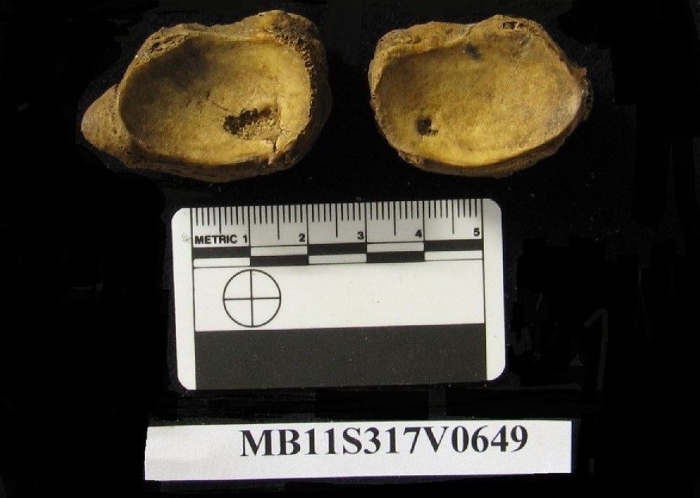
Wearing clogs may have caused foot problems
Research by bioarchaeologists from Leiden and Canada has shown that 19th-century Dutch farmers regularly had bone defects. These may have been caused by wearing clogs. Publication in the International Journal of Paleopathology.
The archaeologists made the discovery after analysing the skeletons of about 500 people who were buried in a cemetery in Middenbeemster, mainly in the 19th century. When the cemetery was cleared in 2011, Leiden researchers and students were given the opportunity to excavate the skeletons. These have since formed an important source of research. With isotope research, paleopathology and mass spectrometry the researchers have been able to establish the eating patterns and health of these people as well as any diseases they suffered from.
Cartilage breaks loose
Leiden master’s student Irene Vikatou has now discovered Osteochondritis dissecans surprisingly often in these skeletons. This is a condition in which a fragment of cartilage and the underlying bone breaks loose from the surface of the joint. In general, less than one percent of the population suffers from the condition, but in Middenbeemster this was as much as 13 percent. And in all cases, this was in the feet.
Craters in the bone
‘It looks as if there are craters in the bone, as if frangments have just jumped out of it,’ says Andrea Waters-Rist, osteoarchaeologist at Western University Canada and co-author of the paper. Until recently, she taught on the Master’s programme in Human Osteology and Funerary Archaeology. ‘We didn’t need a microscope to discover them, they were that visible.’

Rigid clogs
The researchers suspect that wearing clogs contributed to this bone defect. Combined with hard physical labour, the hard and rigid footwear may have led to the small bone injuries on the feet. Comparative research with other old skeletons is needed before a definitive conclusion can be reached.
Master’s programme
Leiden archaeologist and co-author Menno Hoogland is proud of the scientific publication by ‘his’ master’s student. ‘Every year we have between eight and 20 students in our Master’s programme in Human Osteology and Funerary Archaeology. Many of these conduct practical research into the Middenbeemster skeleton collection. Previous research has shown, for instance, that children were breastfed for a surprisingly short amount of time, and that many people from Beemster – young children in particular – had a severe vitamin D deficiency.’
Archive research
The archaeologists from Leiden have also managed to identify about 200 nameless skeletons. Hoogland: ‘We did not just use skeletal research for this but also archive material – from burial records to tax papers. This was only possible with the all the help of the Historical Society of Beemster.’
Read the full article in the International Journal of Paleopathology.
